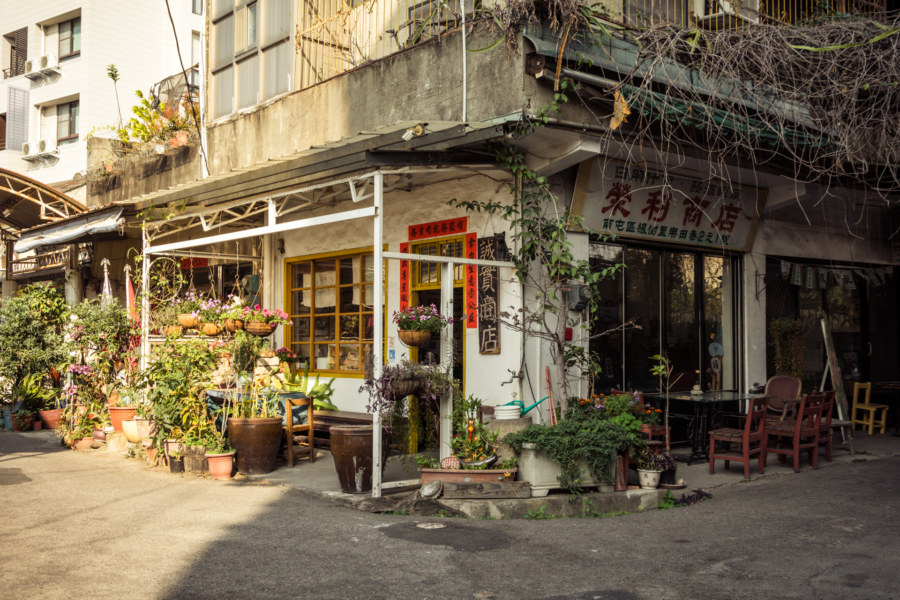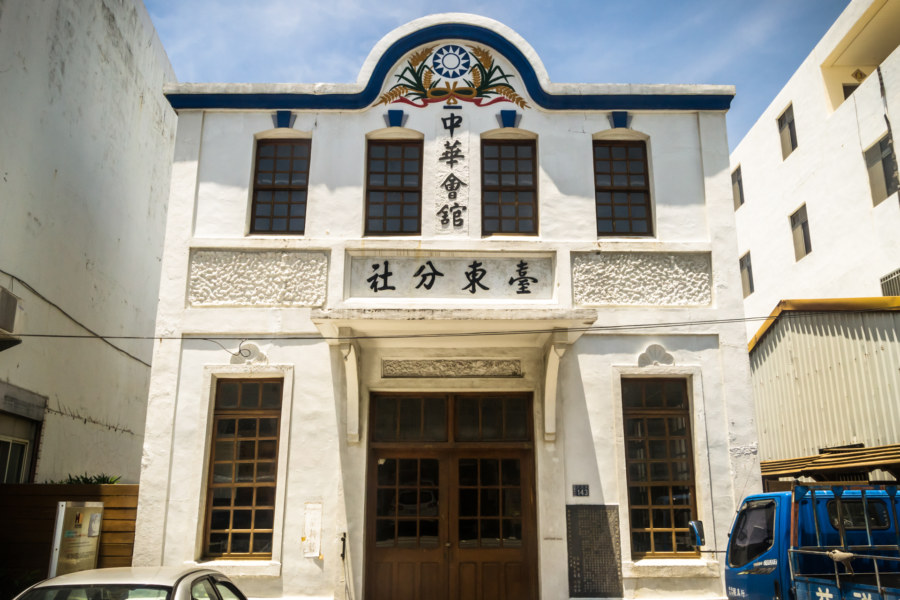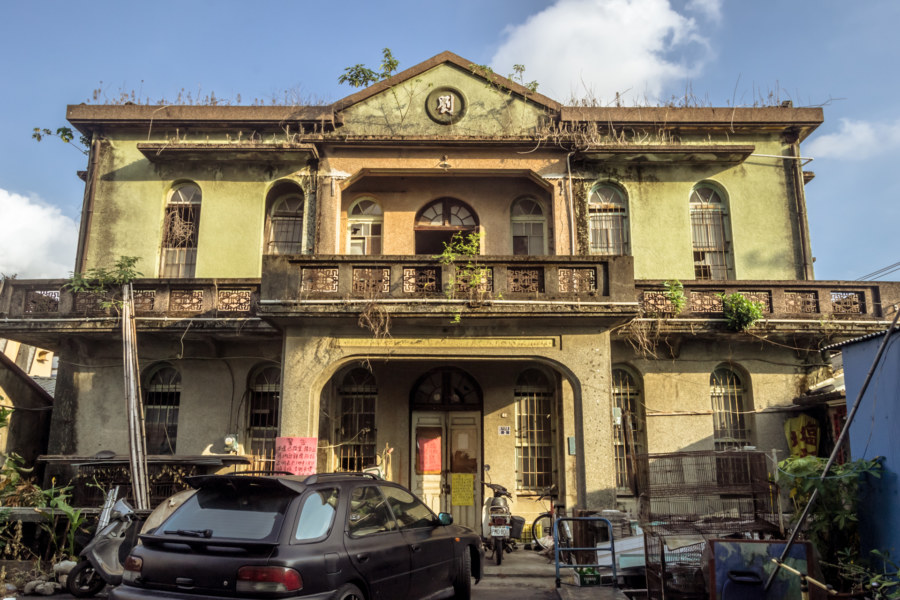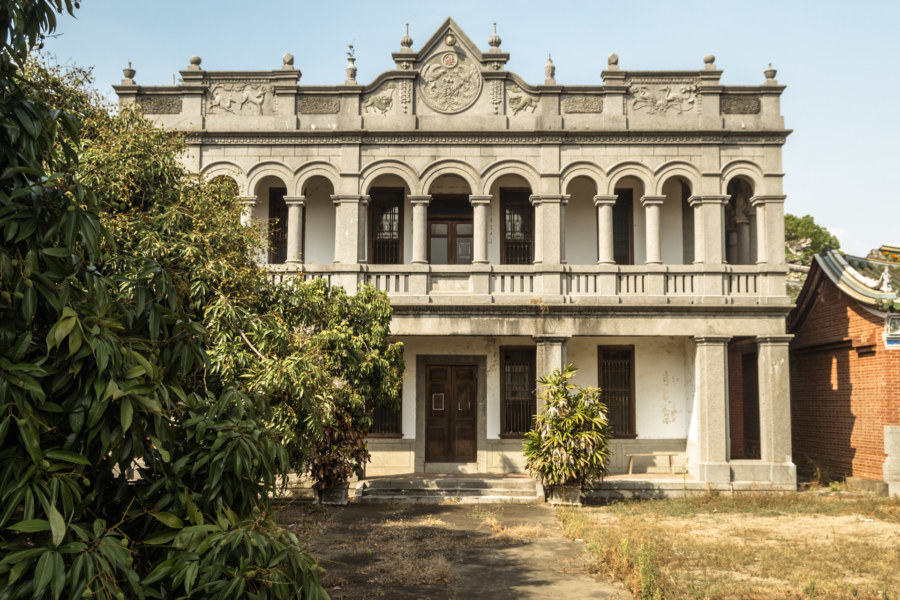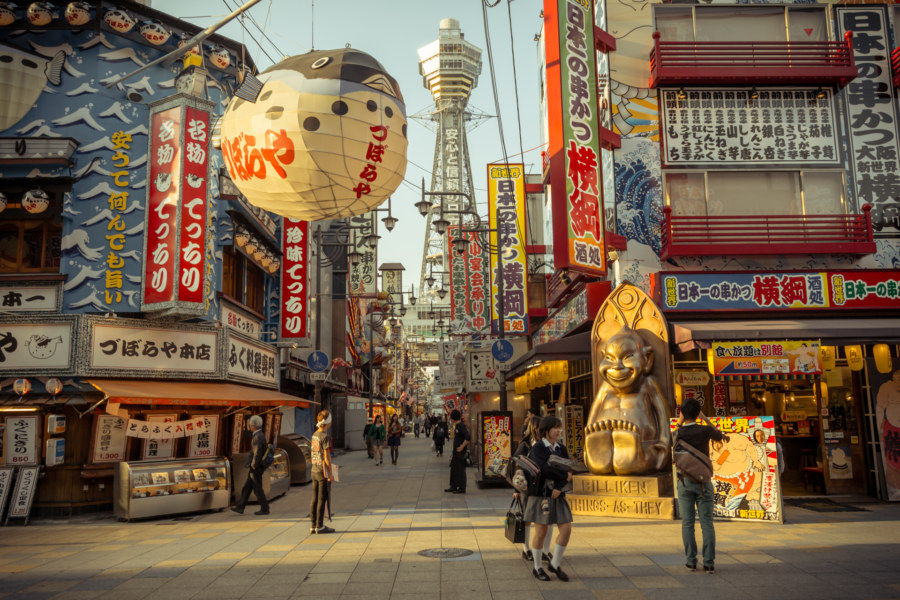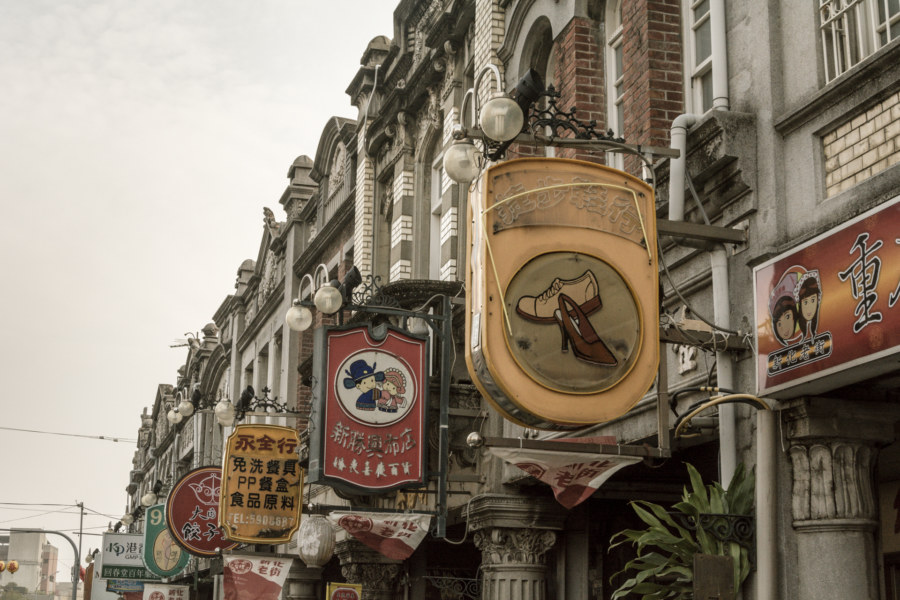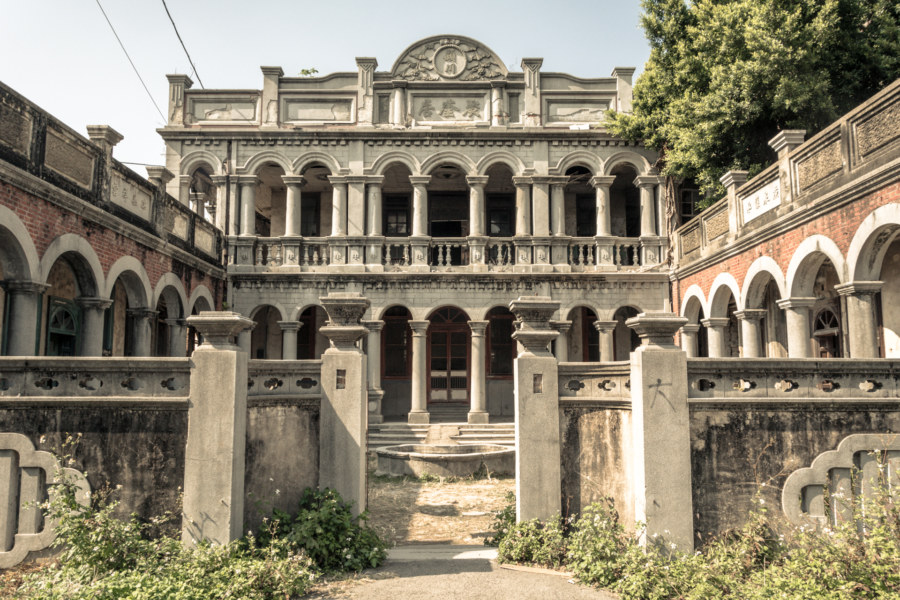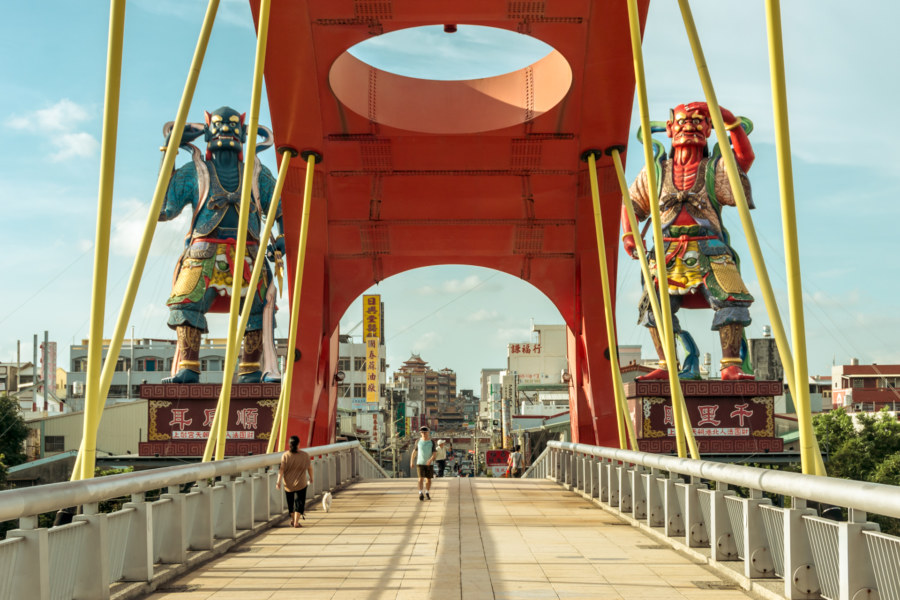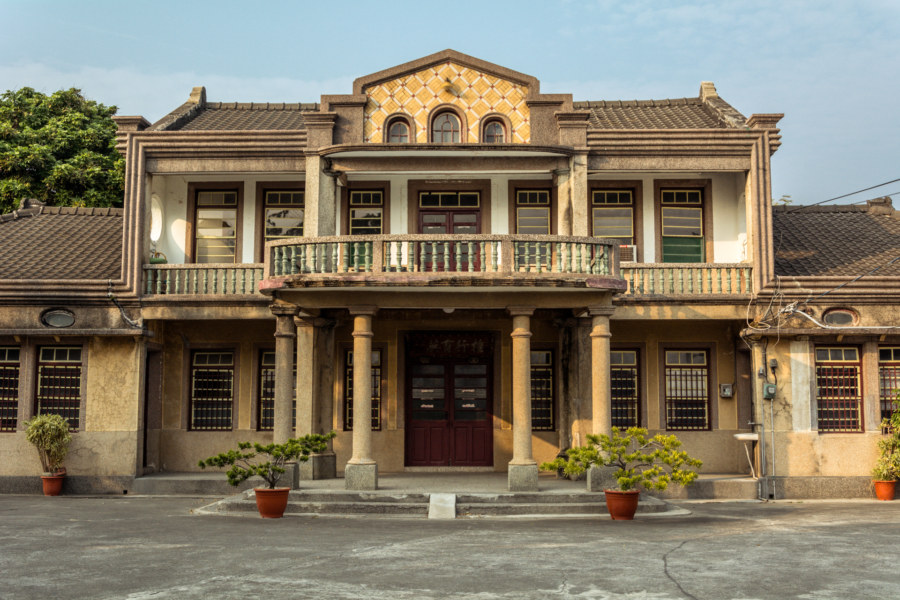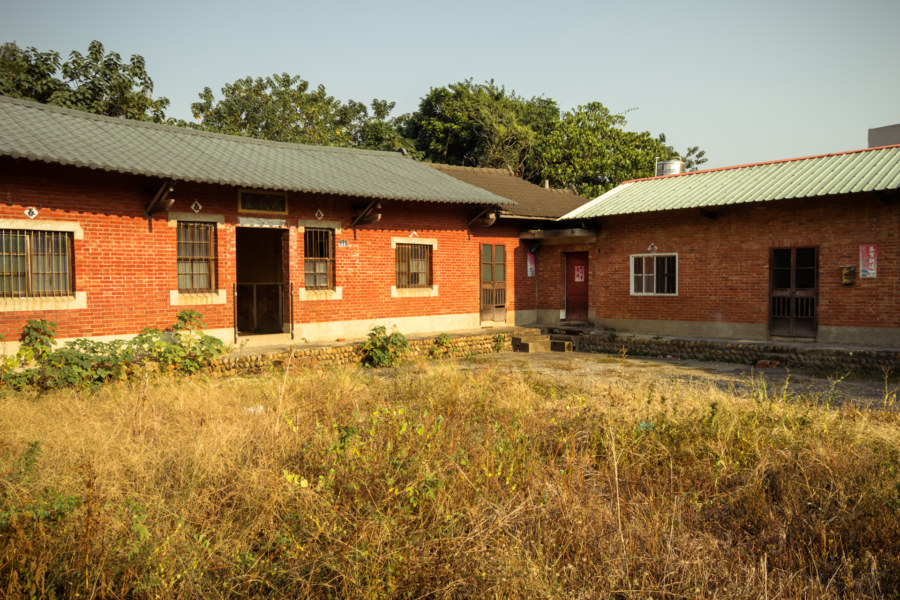Taichung is home to an unusual social experiment: the Honest Store 誠實商店 in the Fēngshù Community 楓樹社區 (literally “Maple Community”) of Nantun, Taiwan. According to roundTAIWANround (through which I discovered the place) it was once a general store of the traditional variety that you’ll still find scattered around the countryside and in older neighbourhoods. Such shops have been fading into history for years, unable to compete with the modern chains that have become symbols of Taiwan’s culture of convenience. The shop would have shut down had the owner not experimented with a new model: locally-sourced goods, financial transparency, and no paid staff, relying on the honesty of its patrons to stay in business.
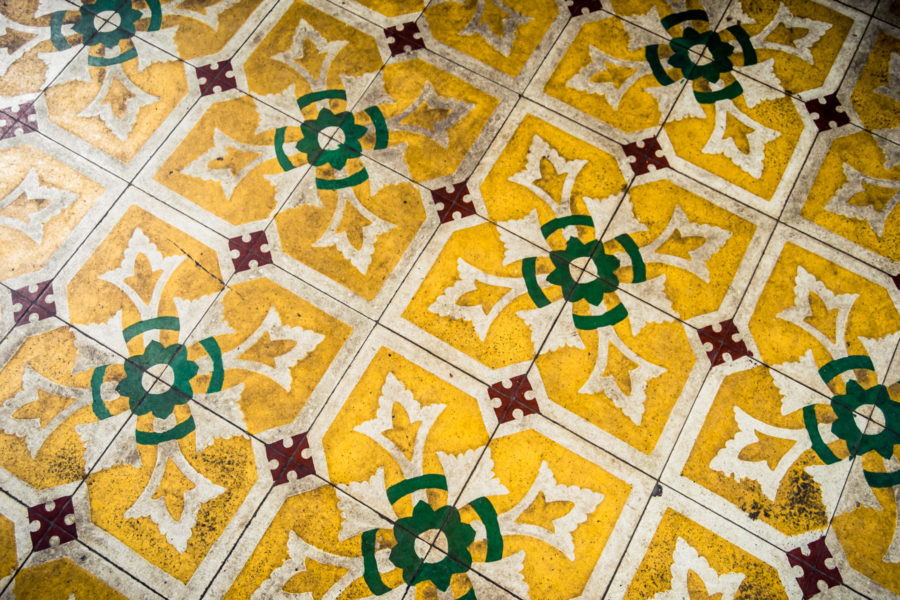
Echoes of the last century.
Taitung Chinese Association 台東中華會館
The historic Chinese Association on Zhongzheng Road in Taitung City.
It never ceases to amaze me what can be learned from keenly observing the streets of Taiwan and following up with a little research online. I only spent one full day in Taitung City at the tail end of a bicycle trip down south this June but managed to chance across a number of interesting sights in that time, this historic building among them.
Located at 143 Zhongzheng Road 中正路, this is the Taitung Branch 台東分社 of the Chinese Association 中華會館, originally built in 1927 while Taiwan was under Japanese rule. A plaque out front features historic information in English (shocking in this part of the country) as well as a direct translation of the name, “Taitung Chunghua Hostel”, but it was more of a clubhouse or assembly hall, not a place to secure lodging for the night. Interestingly, the proper Chinese name is the same one used by the Chinese Consolidated Benevolent Association of America. Have a look at the photos…
Chaozhou Liu House 潮州劉厝
I noticed this old-fashioned western-style mansion on the outskirts of Chaozhou in Pingtung while cycling through the deep south of Taiwan in 2015. In a sea of ugly metal shacks and bland concrete apartment blocks it is a rare pleasure to encounter a building like this one. I also enjoy the challenge of trying to learn something of the history of such places. Usually with some knowledge of the local area and the family name on the facade I can piece something together from blogs and government records—but this time I’m stumped, and I’m not the only one. Just about all that is known for certain is the name, Liu House 劉厝, which came up in some real estate records. Based on my growing familiarity with Japanese colonial era architecture I would guess this mansion dates back to the 1930s or so.
Yumei Hall 玉美堂
Yùměi Hall 玉美堂, also known as known as Hóng Family Mansion 洪氏洋樓, is located in Jiālǎo Village 茄荖村, a small settlement on the eastern edge of Fenyuan in Changhua, Taiwan. Built in the late 1920s when the village was administered as part of Caotun in Nantou, it is one of only a handful of “Western-style” country manors built in central Taiwan during the Japanese colonial period (see my post about Jùkuíjū 聚奎居 for another great example).
Nishinari and The Way Things Ought To Be
Nishinari is widely reputed to be the most run-down, crime-ridden, and dangerous part of Osaka—and about as close to a slum as you are likely to find anywhere in Japan. This may explain the preponderance of cheap backpacker accommodation in Shinimamiya, the area just south of Shinsekai 新世界 (literally “New World”), where I stayed for a single night last May before returning to Taiwan. Although I only had a few hours to work with I couldn’t resist wandering around Nishinari to see just how bad it was. I figured it couldn’t be any worse than the Downtown Eastside, the festering carbuncle of Vancouver, which I had wandered through on many occasions.
Xinhua Old Street 新化老街
Xinhua Old Street 新化老街 is one of the finest old streets in all Taiwan. Located in Xinhua, Tainan, the street is lined baroque revival and art deco buildings from the Japanese colonial era. Most of the buildings on the western side of the street date back to the 1920s whereas the eastern side features a more modernist style from the late 1930s.
Jukuiju 聚奎居
Jùkuíjū 聚奎居 is an abandoned mansion in Wuri, Taichung, built in 1920 by Chén Shàozōng 陳紹宗, a wealthy businessman and landowner. The architecture is a combination of the traditional Taiwanese sānhéyuàn 三合院 (a U-shaped building with three parts surrounding a central courtyard) and the Baroque Revival style of the Japanese colonial era. It is located on the rundown, industrial margins of the city, along an otherwise unremarkable lane next to a military base, looking completely out of place in space and time.
Postcards From Beigang 北港明信片
Beigang is a historic town on the riverside border between Yunlin and Chiayi in southern Taiwan. I made a brief, unplanned stopover in Beigang while riding north to Changhua in the summer of 2014. I was only vaguely aware of Beigang’s existence, having at some point read something about Cháotiān Temple 朝天宫, one of Taiwan’s most famous Mazu 媽祖 temples, but I had a hunch that there might be more to see—and I was right! If you enjoy visiting traditional towns with a lot of history then Beigang should definitely be on your list.
Huang Sanyuan Residence 黃三元故居
Huáng Sānyuán Residence (黃三元故居) is a beautiful Western-style house located along a country road in Puxin, a rural township in the heart of Changhua, Taiwan. It was built in 1940 by Huáng Yì 黃義, a wealthy employee (and presumably an executive) of the Japanese colonial era Taiwan Sugar Company (台糖公司). If this government source is to be believed Huang Yi had five wives who bore him five sons—and some unknown number of daughters. No wonder he needed such a large house!
A Traditional Home in Dacun 大村三合院
Today I would like to take you inside an abandoned sānhéyuàn (三合院), a traditional Taiwanese courtyard home. This particular home is in Dacun, a rural township in Changhua, but it is not unique. The Taiwanese countryside is littered with tens of thousands of these old homes, many of which have fallen into disrepair and abandonment over the years. I have given this place a name but it is merely a description of convenience. Chances are it has no formal name.
